I didn’t mean to buy the November issue of Architectural Digest, I really didn’t, but I just couldn’t resist the travel feature. It’s a 3-page spread about the Palazzina Cinese, a gem of a chinoiserie villa in Palermo.
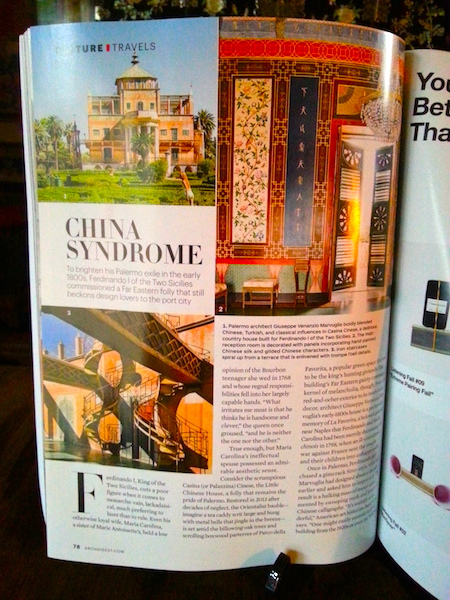
The first page of the AD spread on the Palazzina Cinese.
By strict chronological reckoning, the chinoiserie decor of the Palazzina Cinese falls outside the 1682-1789 timeframe of the Versailles Century because it dates from after 1800. The spirit of chinoiserie, however, is decidedly 18th century, so I rule it within bounds. Basta!
The villa was purchased as a holiday home by King Ferdinand of Naples and Sicily* after he arrived in Palermo in 1799. He’d been driven out of Naples by a republican uprising. Fortunately, his other kingdom, Sicily, remained loyal. He and his wife Maria Carolina, sister of Marie-Antoinette, settled down to life in Sicily, which included decorating their new folly. They promptly settled on a decorative scheme in the ‘Chinese’ taste.
Actually, the rooms feature not just chinoiserie, but also turcquerie, which you can make out in the picture at top left on the second page of the article (see below).
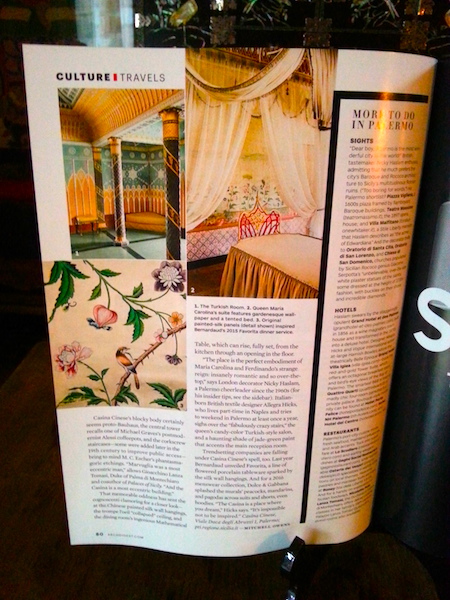
The second page of the AD spread on the Palazzina Cinese.
You can read the full article with its high-quality photos on the AD website. Check it out here: http://www.architecturaldigest.com/story/palermo-italy-casina-cinese.
*The 2 kingdoms were merged in 1816, after which the unified state was called the Kingdom of the Two Sicilies.







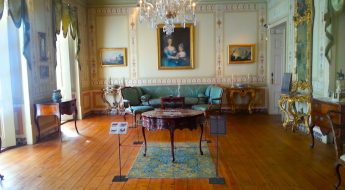
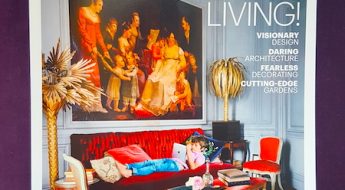
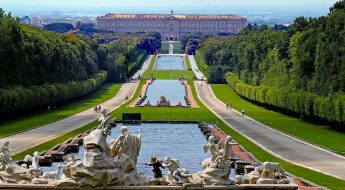








Leave a Comment